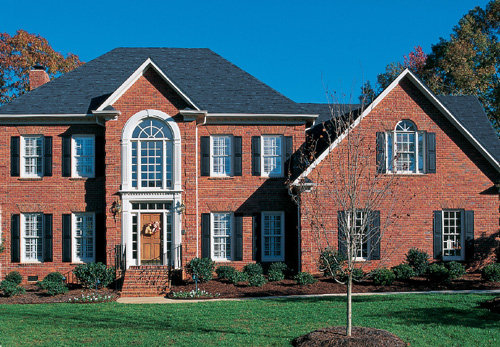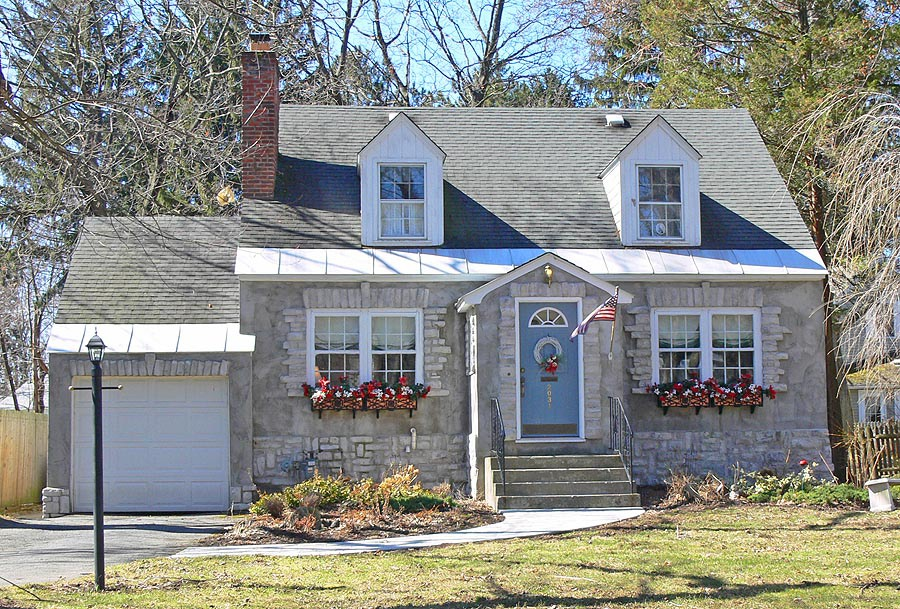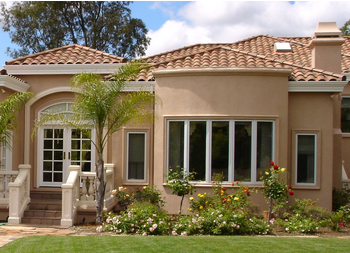Siding Series 4: Stone, Brick, Stucco, Metal
In our last article in the series, we took a glance at common siding types such as Fiber Cement, Vinyl, and various Wood siding. Here, we’ll cover less common but still very popular options for your home.
 Brick Siding
Brick Siding
A staple among residential communities, brick is a popular choice among many homeowners. Brick is a durable material that offers low maintenance. When we think of brick we usually envision a beautiful red home, but brick comes in various textures, sizes, and colors. Brick generally won’t serve as a structural part of your home. It’s likely a veneer built on top of what is probably your house’s wood frame structure. Holding it all together is water, mortar, and a cement mixture.
Stone Siding
It will probably come as no surprise to learn that stone is one of the most durable materials. Slate, limestone, granite, and various other types are stunning and practically impervious to bad weather. Stone, in particular, is advantageous because it is a green option.
The biggest down side is the cost of materials, which are often much greater than other forms of siding. This is in part because there is a high level of difficulty when adding stone to an existing home. Down the road, however, the investment pays dividends; stone retains its natural beauty decades after it was first installed and requires minimal maintenance.
Stone or Brick Veneers
Today, the fabricated stone and stone veneers manufactured are often molded from actual stone, rock, other similar materials. Like real stone, it has the benefit of being durable while looking pretty convincing. The materials are also lightweight, making it simpler install than real stone. Fabricated brick and brick veneers manufactured today are typically molded from actual clay, brick, or other natural materials or polyurethane, and are durable, realistic-looking, lightweight, and easy to install.
Stucco Siding
Stucco has a reasonable price tag,various applications, and numerous recipes for manufacturing it, though traditional stucco includes cement mixture, which is added to lime or sand. As a siding, stucco has been used for many hundreds of years. One of the reasons it is popular is because it can be textured and shaped to achieve an array of architectural styles.
Metal Siding
No longer does this material have to pretend to be another type of siding; metals such as steel or aluminum are used for the exteriors of modern homes.
Best of all, homeowners have the choice of zinc, aluminum, copper, or many steel varieties. Such metals can be molded into different curves, edges, and shapes. The durability and longevity of these metals far surpass many common materials available today.
The installation typically requires a barrier to protect against moisture and a frame, for example, plywood, but these requirements will differ depending upon the location. Keep in mind that some metals, including weathering steel and copper, will change color when they are exposed to weather.
Now that you know of many of the popular options available to you, it’s time to select one. Stay tuned for some helpful tips on choosing the right siding for your home.




